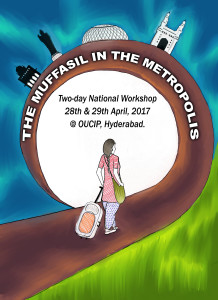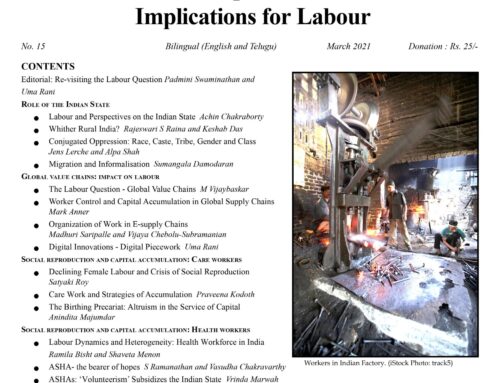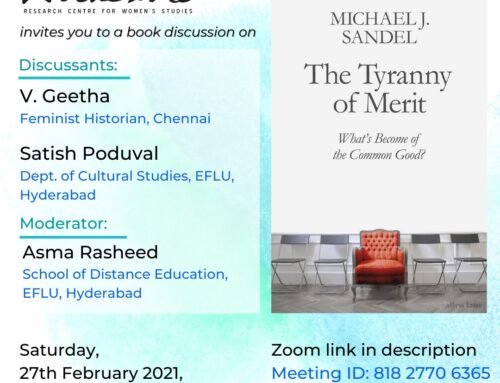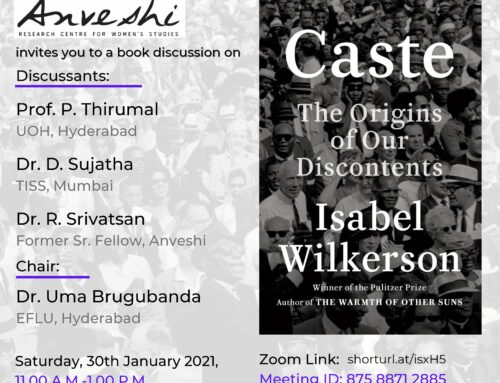Anveshi cordially invites you to a two-day national workshop The Muffasil in the Metropolis on 28th & 29th April, 2017 Venue: OUCIP, Osmania University, Hyderabad.
A Brief Report on The Muffasil in the Metropolis Click for Concept Note Click for Schedule
 In the last couple of decades, increasing number of people have begun to come alone to the city for better education and job opportunities which they lack in their home-towns, thanks to India’s path of unequal growth and development. Cities are (perhaps never been!) not just physical spaces but also repositories of our aspirations, holding forth promises of better life. The popular imagination of the city is fuelled by the mass-mediatized images beaming through television, films etc. Young women now come to a big city to escape from the patriarchal control of home, surveillance of their home town or just to find themselves. A Dalit boy or girl might be seeing a city as an egalitarian place which will give them some relief from age old feudal casteism that they face each day in their village. For a queer person, city might reflect the place to get some space for independent identity. Their different journeys reflect the aspirations which either get fulfilled or shattered by the city and its institutions.
In the last couple of decades, increasing number of people have begun to come alone to the city for better education and job opportunities which they lack in their home-towns, thanks to India’s path of unequal growth and development. Cities are (perhaps never been!) not just physical spaces but also repositories of our aspirations, holding forth promises of better life. The popular imagination of the city is fuelled by the mass-mediatized images beaming through television, films etc. Young women now come to a big city to escape from the patriarchal control of home, surveillance of their home town or just to find themselves. A Dalit boy or girl might be seeing a city as an egalitarian place which will give them some relief from age old feudal casteism that they face each day in their village. For a queer person, city might reflect the place to get some space for independent identity. Their different journeys reflect the aspirations which either get fulfilled or shattered by the city and its institutions.
Hyderabad, the city of minarets, pearls, biryani, and centre for global cyber activities is no exception to this aspirational landscape. Presently about 25 percent of the population in Hyderabad is migrant population. The software boom and the resultant growth in the allied sectors too have attracted a large number of young people to the city. Burgeoning educational institutions in the city have also increased the number of students coming to the city.
Aspirational migrants come from multiple social, political and economic backgrounds. Their multiple entry points and differential access to resources make their journeys distinct from each other. Depending on whether they land up in the universities, IT sector jobs, as mall workers, nurses, in coaching centres, for government jobs, their future paths get decided as these institutions further mould their aspirations. For many the city becomes a ladder which then broadens their horizon. We find that what such young people can and do depends on the complex set of factors such as the institutional culture, their support networks at the workplace and readiness for new life. While we all recognize and know that the city brings about a change in the young people, less acknowledged or well-known is the change that these muffasil youth are bringing about in the city and its character. This change is manifested in the increasing number of women’s hostels, changing nature of old neighbourhoods, businesses catering to the needs of migrant population, addressing concerns of women’s safety (She teams, She shuttle). This could be in response to women students demanding equal library timings in MANNU, students in HCU who raise their voices against the structural casteism present in the universities, nurses who see city as the place to generate financial support for their families, queer people who see city as a escape from repressive structures, IT workers who want the city to be more accessible in terms of transportation and accommodation. Through this workshop, we wish to understand how these migrations and the migrants are changing the face, character and structure of the cities. We envisage it as a platform to collectively think and learn about these changes that are occurring in different cities across the country and in the context of Hyderabad. This would entail listening to a wide range of people, from media journalists, academicians, geographers, urban planners, historians, artists, performers who are engaged in the process of understanding change in contemporary cities from diverse perspectives with different tools and lenses.





Leave A Comment